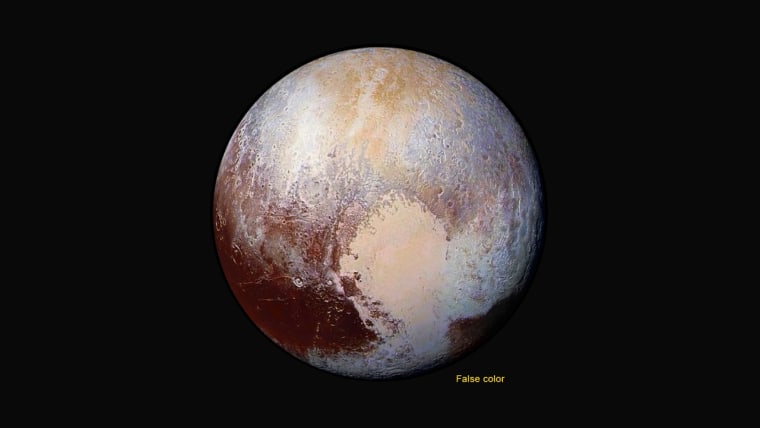NASA's New Horizons probe has captured an image of Pluto from a totally new perspective — the far side. A picture taken after the July 14 flyby, as New Horizons hurtled past Pluto deeper into the Kuiper Belt, shows the dwarf planet backlit by the sun.
"You can only get this image by going to Pluto, going to the far side, and looking back," said New Horizons principal investigator Alan Stern at a press conference on Friday.
It certainly makes for a dramatic picture — but it's also an extremely significant scientific discovery.
"This is our first peek at weather in Pluto's atmosphere," said co-investigator Michael Summers, from George Mason University. "The haze goes 100 miles above the surface — that's five times our prediction."
It may be thin, cold and instantly lethal to an earthling, but Pluto has an atmosphere and it's much deeper than expected. Investigators believe this hazy layer is made up of mixed hydrocarbons breaking up in the ultraviolet light, forming chemical ice, and falling to the surface — perhaps resulting in the dwarf planet's rusty hue.

Other new images shown at the press conference hinted at the definition in which the planet will eventually be viewed. The improved detail shows that the "Tombaugh Regio" — the bright, heart-shaped region that New Horizons mission members named after Pluto's discoverer, Clyde Tombaugh — may be covered in nitrogen snow. And close-up shots show a glacier-like flow of hydrocarbon ice into nearby geological features.
But more fancy pictures will take some time to arrive. Only about 5 percent of the spacecraft's data have been downloaded so far, and the next big load will be non-visual readings — data from instruments other than the probe's several cameras.
Pictures will flow again in September, but investigation of existing photos and data will continue — producing improved imagery like this enhanced color, full-disc portrait of Pluto.

(A true-color version can be found here.)
"We've never been to a double planet system before," Stern said, referring to Pluto and its largest moon, Charon, "and it's just turning out to be a scientific wonderland."
